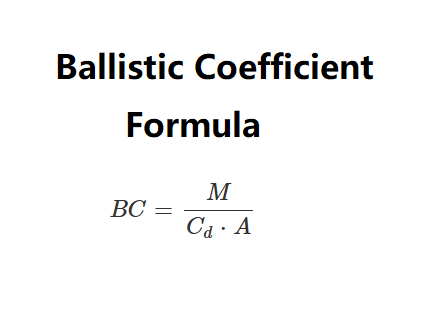 Home
Home
 Back
Back

Definition: This calculator determines the ballistic coefficient (\( BC \)) of a projectile based on its mass (\( M \)), coefficient of drag (\( C_d \)), and cross-sectional area (\( A \)).
Purpose: It assists physicists and engineers in analyzing the aerodynamic efficiency of projectiles in ballistic motion.
The calculator uses the relationship:
Where:
Explanation: Enter the mass, coefficient of drag, and cross-sectional area in the chosen units, and the calculator computes the ballistic coefficient. Results use scientific notation (5 decimal places) if the ballistic coefficient in kg/m² is greater than 10000 or less than 0.00001, otherwise 2 decimal places. The image does not provide sample inputs or outputs, so default values are used for testing.
Details: The ballistic coefficient is crucial for understanding how a projectile resists air drag, impacting its range and stability in flight, used in ballistics and aerospace.
Tips: Enter positive values for mass, coefficient of drag, and area, and ensure \( C_d \neq 0 \) and \( A \neq 0 \), then click "Calculate." Results show the ballistic coefficient in kg/m², g/cm², and lb/ft² (scientific notation with 5 decimal places if > 10000 or < 0.00001 kg/m², otherwise 2 decimal places).